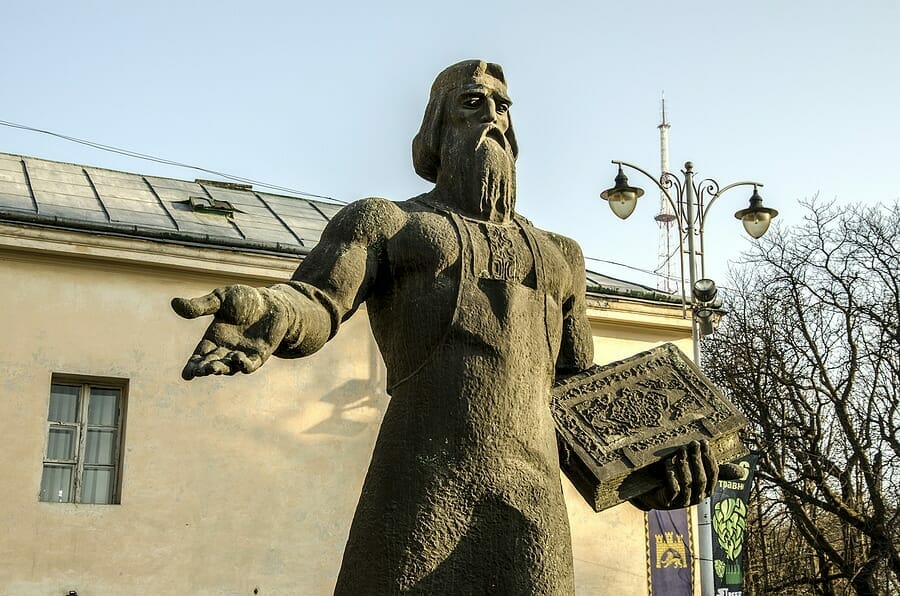The experience of opening a book fresh off the printing press is special, as you can feel the texture of the paper and enjoy the beautiful crisp typeface, which will bring to life a new world of learning or adventure. We take books for granted these days, but when exactly was the first printed book made?

Storytelling is a natural human instinct which began with the spoken word, and in early civilizations can be seen in cave paintings and inscriptions on stone slabs. The ancient Egyptians were the inventors of papyrus scrolls which could be written on with ink. Only a select group of the population knew how to read and write in hieroglyphics, however.
Around the 2nd century BC, parchment began to be used. This is the skin of animals such as sheep and goats, which has been cleaned, stretched, and scraped to allow for inscription. Vellum, made from the skin of very young animals, is a finer and better quality type of parchment.
Throughout the European Middle Ages, vellum was used to produce beautiful illuminated manuscripts, which were highly coloured and decorative, and tinted with silver and gold. In 1454, the first ever printing press was built by a German man named Johannes Gutenburg. This opened the door for the mass production of books as we know them.
The first ever book to roll off this printing press was the Gutenberg Bible. Only 48 copies are known to have survived, two of which can be seen in the British Library. Most copies retained some hand-painted illustrations alongside the typeface. Printing presses around the world were built soon after its invention.
In Venice, Aldus Manutious founded a printing press which produced pocket-sized versions of the Greek Classics, creating portable books which were solely for entertainment rather than instruction. By 1832, the first books with covers were produced in Britain. Increasing literacy fuelled demand for cheap and sensational stories, which came to be known as ‘penny dreadfuls’.
This fiction was aimed at the mass market, and often resembled booklets rather than the glossy paperbacks we are familiar with today. They were issued in weekly episodes of eight to 16 pages, numbered and printed in double columns with black and white illustrations. They told rip-roaring tales of highwaymen, pirates, and crime.
Hardback books were considered the preserve of the middle and upper classes, and classic literature was usually published in this format, as opposed to the cheap gothic horror stories beloved by the wider public.
The first ever mail-order book company was set up in America, by two brothers named Boni, and the company eventually became the prestigious Random House publishers. The much-loved British publisher Penguin was established in 1935, which specialised in clearly branded and accessible books designed to appeal to everyone.
Nowadays, books are not just limited to the printed format, but can be produced as ebooks or audio books. Neither is it any longer necessary to be taken on by a publishing company to release a book, as there are many self-publishing methods and printing services available.
If you are need to print ebook, get in touch today to see how we can help.
Click here to order booklet printing or document printing.
Looking for a reliable printing company?
Get an instant quote